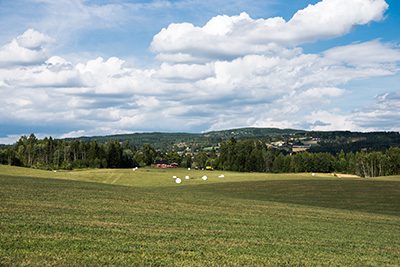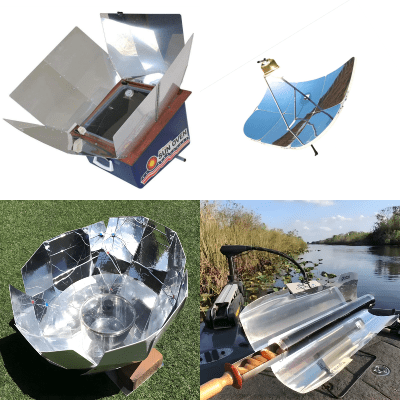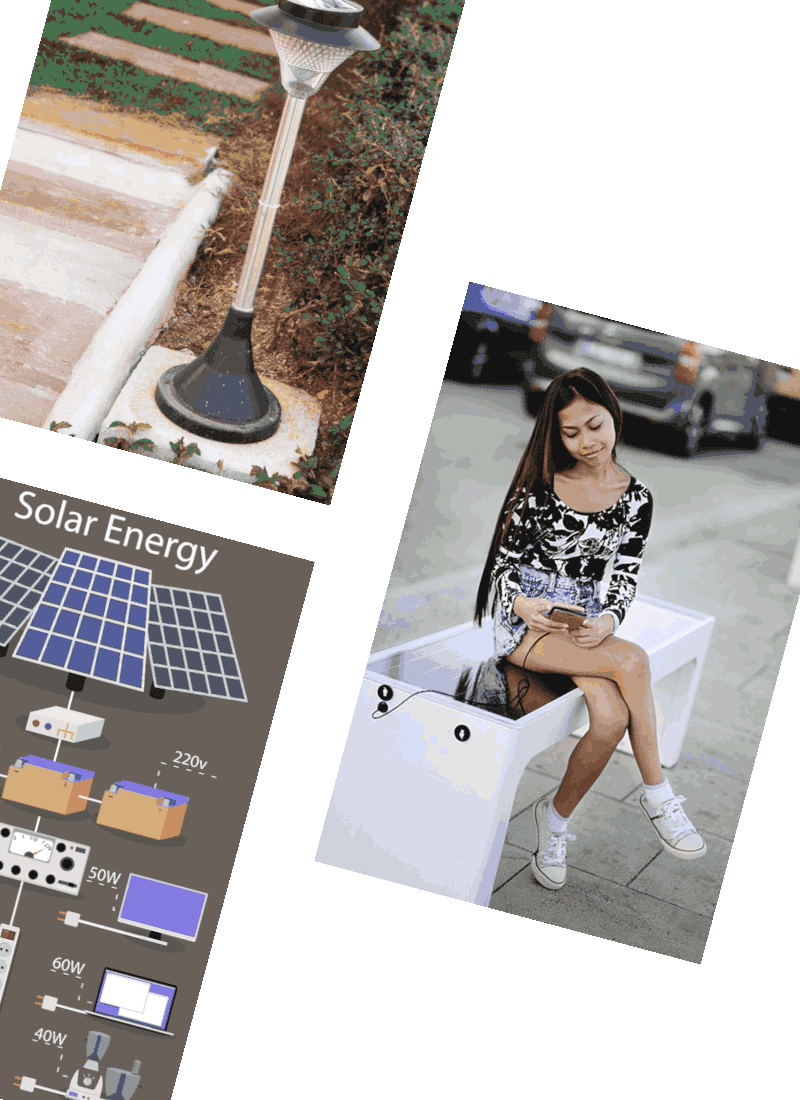What Is a Solar Oven?
 Solar power has revolutionized the way we think about energy. From powering homes to charging gadgets, the sun’s energy offers a sustainable solution to many of our daily needs. But have you ever wondered, what is a solar oven? In this post, we’ll delve into this eco-friendly cooking method, highlighting its benefits and showcasing some top picks from Amazon.
Solar power has revolutionized the way we think about energy. From powering homes to charging gadgets, the sun’s energy offers a sustainable solution to many of our daily needs. But have you ever wondered, what is a solar oven? In this post, we’ll delve into this eco-friendly cooking method, highlighting its benefits and showcasing some top picks from Amazon.
What is a sola oven. Often referred to as a solar cooker, is a device that harnesses the sun’s energy to cook or heat food. Instead of using traditional fuel sources like gas or electricity, it uses reflective panels or mirrors to concentrate sunlight onto a cooking chamber or pot.
This concentrated sunlight raises the temperature within the chamber, allowing food to be cooked or heated. Solar ovens are eco-friendly, cost-effective, and a sustainable alternative to conventional cooking methods, making them a popular choice for those looking to reduce their carbon footprint.
The Basics of a Solar Oven
Key Components of a Solar Oven
Reflective panels or mirrors:
Direct sunlight into the oven. These panels are designed to maximize the capture of sunlight, ensuring a higher temperature within the oven.
Cooking chamber or pot:
Where the food is placed. Typically made of dark materials, this chamber absorbs the concentrated sunlight and evenly distributes heat to the food.
Insulation:
Retaining the heat, ensuring efficient cooking. Proper insulation prevents heat loss, allowing the oven to maintain a consistent cooking temperature even in varying weather conditions.
Thermometer:
Helps monitor the cooking temperature. With this tool, users can ensure that the oven reaches and maintains the desired temperature for optimal cooking results
4 Benefits of Using a Solar Oven
Environmental Benefits
 Switching to a solar oven is more than just an eco-friendly choice; it’s a commitment to a sustainable future. By harnessing the sun’s energy, solar ovens bypass the need for fossil fuels, significantly reducing carbon emissions.
Switching to a solar oven is more than just an eco-friendly choice; it’s a commitment to a sustainable future. By harnessing the sun’s energy, solar ovens bypass the need for fossil fuels, significantly reducing carbon emissions.
This reduction plays a crucial role in combating climate change and its adverse effects. Moreover, as we increasingly tap into non-renewable energy sources, the importance of alternatives like solar cooking becomes evident. Not only does it conserve these precious resources, but it also minimizes air pollution, leading to cleaner air and a healthier environment.
Practical Benefits
Imagine the joy of preparing your favorite dishes without the constant worry of escalating electricity or gas bills. Solar ovens, by design, are a one-time investment that continues to deliver value over time. The savings on utility bills can be substantial, especially in sun-rich regions. But the benefits don’t stop at cost savings. Solar ovens are incredibly portable, making them a favorite for campers, hikers, and those who love outdoor adventures. Their design eliminates the risks associated with gas leaks or electric shocks, ensuring a safe cooking experience every time.
Cost-Saving Benefits
One of the standout advantages of using a solar oven is the significant cost savings associated with fuel consumption. Traditional cooking methods often rely on electricity, gas, or charcoal, all of which come with recurring expenses. Over time, these costs can accumulate, especially if you cook frequently. In contrast, a solar oven harnesses the sun’s energy, which is not only abundant but also entirely free.
By eliminating the need for purchased fuel, solar ovens offer a long-term, cost-effective solution. Think of it as an investment; while there might be an initial cost to purchase a solar oven, the savings garnered from not buying fuel can quickly offset this. In the long run, not only are you contributing to a more sustainable planet, but you’re also keeping more money in your pocket.
Culinary Benefits
Solar cooking is not just about sustainability; it’s also about flavor and nutrition. The design of solar ovens ensures even heating, which means your food cooks uniformly without the risk of burns or undercooked sections. This even cooking results in dishes that are flavorful and rich in texture.
Additionally, the gentle and slow cooking process of solar ovens is a boon for nutrition enthusiasts. Unlike high-heat methods that can destroy certain nutrients, solar cooking retains more vitamins and minerals in your food. So, with every bite, you’re not just enjoying a delicious meal but also reaping the health benefits of nutrient-rich food.
 Types of Solar Ovens
Types of Solar Ovens
Box Cookers
Box cookers are aptly named for their box-like design, equipped with reflective panels that direct sunlight into the cooking chamber. The design is simple yet effective, making them one of the most popular choices for solar cooking enthusiasts.
The enclosed nature of the box allows for consistent and even heating, making it perfect for slow-cooked dishes. The All American Sun Oven Solar Oven, available on Amazon, is a testament to the efficiency and reliability of box cookers. Its design ensures that food is cooked thoroughly, retaining its flavor and nutritional value, all while using the power of the sun.
Parabolic Cookers
Taking inspiration from the design of a satellite dish, parabolic cookers (like the YAMO DUDO Parabolic Solar Oven) are known for their ability to concentrate sunlight to a single point. This concentrated energy results in higher temperatures, making parabolic cookers ideal for dishes that require intense heat, such as frying or grilling.
The curvature of the cooker ensures that sunlight is focused directly onto the cooking pot, leading to faster cooking times compared to other solar oven designs. While they might require more frequent adjustments to stay aligned with the sun, their efficiency, especially in sunny conditions, is unparalleled.
Panel Cookers
Merging the best of both worlds, panel cookers combine features from a box and parabolic designs. They utilize multiple reflective panels to direct sunlight towards a central cooking pot, ensuring even heating from all angles. This design offers versatility, allowing users to cook a wide range of dishes, from slow-cooked stews to quickly-grilled meats.
Panel cookers are also known for their portability, often folding down to a compact size for easy transport. For those interested in exploring this hybrid design, check out the Haines 2.0 SunUp Solar Cooke on Amazon, each offering unique features to enhance the solar cooking experience.
Vacuum Tube Solar Ovens
Vacuum tube solar ovens, like the GoSun Solar Oven, utilize advanced technology to harness the sun’s energy efficiently. The GoSun Sport® is a prime example of this type of oven. It stands out for its ability to bake, roast, and steam a meal for two people in just 20 minutes under direct sunlight. The vacuum tube insulation ensures that the oven remains cool to the touch while retaining heat inside, allowing it to reach temperatures up to 550°F.
This design not only ensures efficient cooking but also guarantees that meals stay hot and juicy for hours. These units are lightweight and compact, making they are perfect for on-the-go adventures. Its durability combined with a collapsible design ensures easy setup and storage.
3 Tips for Efficient Solar Oven Cooking
 1. Positioning Your Oven: Proper alignment of your solar oven with the sun is crucial for efficient cooking. To begin, stand in front of the cooker, ensuring your back faces the sun. This position will cast a shadow in front of you. Your next step is to move the oven unit until it’s positioned directly beneath your shadow. This simple yet effective method ensures that your cooker is perfectly aligned with the sun’s current position in the sky.
1. Positioning Your Oven: Proper alignment of your solar oven with the sun is crucial for efficient cooking. To begin, stand in front of the cooker, ensuring your back faces the sun. This position will cast a shadow in front of you. Your next step is to move the oven unit until it’s positioned directly beneath your shadow. This simple yet effective method ensures that your cooker is perfectly aligned with the sun’s current position in the sky.
However, alignment doesn’t stop there. The sun’s angle varies throughout the day, and to capture its energy most effectively, you’ll need to make periodic adjustments. After positioning the oven under your shadow, observe the angle at which sunlight hits the cooker. Depending on the time of day and season, you might need to tilt the oven slightly up or down. This adjustment ensures that the oven’s reflective panels or mirrors capture the maximum amount of sunlight, leading to optimal cooking temperatures and reduced cooking times.
Remember, a well-positioned solar oven not only cooks faster but also delivers consistent results, enhancing the overall solar cooking experience.
2. Preheating the Oven: Just as you would preheat a conventional oven, it’s essential to allow your solar oven to reach the desired temperature before placing your food inside. Preheating ensures that the cooking environment is consistent from the moment you start, leading to evenly cooked dishes. Depending on the intensity of the sunlight and the type of solar oven you’re using, preheating times can vary. However, as a rule, allowing your oven to sit in direct sunlight for about 20-30 minutes before cooking can make a significant difference in the outcome. Not only does this reduce overall cooking time, but it also ensures that your dishes are cooked thoroughly and evenly.
3. Cooking Time Adjustments: Solar cooking is an art, and understanding the nuances can lead to better results. One of the key aspects to consider is cooking time. Unlike traditional ovens that maintain a steady temperature, solar ovens can fluctuate based on factors like cloud cover, the oven’s position relative to the sun, and even seasonal changes. It’s essential to be flexible with cooking times, often allowing for longer durations on cloudy days or when the sun’s intensity is reduced. Regularly checking your food for signs of doneness can prevent overcooking or undercooking. Remember, solar cooking is a more forgiving process, and with a bit of practice, you can master the art of timing your dishes to perfection.
Common Misconceptions About Solar Ovens
It Can’t Cook on Cloudy Days
 One of the most prevalent myths surrounding solar ovens is that they are rendered useless on cloudy days. While it’s true that solar ovens are most efficient under direct sunlight, they don’t necessarily need a cloudless sky to function. Even on overcast days, the sun emits ultraviolet (UV) rays, which can be harnessed by solar ovens to cook food.
One of the most prevalent myths surrounding solar ovens is that they are rendered useless on cloudy days. While it’s true that solar ovens are most efficient under direct sunlight, they don’t necessarily need a cloudless sky to function. Even on overcast days, the sun emits ultraviolet (UV) rays, which can be harnessed by solar ovens to cook food.
The cooking process might be slower compared to a sunny day, but it’s entirely possible. It’s essential to understand that while the intensity might decrease, solar ovens are designed to capture and concentrate even the slightest sunlight, making them versatile across various weather conditions.
Solar Ovens Can’t Reach High Temperatures
Another common misconception is that solar ovens can’t achieve high temperatures, limiting their cooking capabilities. In reality, with proper positioning and design, solar ovens can reach temperatures comparable to conventional ovens. Parabolic cookers, for instance, can concentrate sunlight effectively, allowing them to reach high temperatures suitable for frying or grilling.
The key lies in understanding the oven’s design and maximizing its exposure to sunlight. With the right conditions and a bit of patience, solar ovens can cook a wide range of dishes, from slow-cooked stews to crispy fried foods, debunking the myth of limited temperature ranges.
Conclusion to What Is a Solar Oven
Understanding “What is a Solar Oven?” opens doors to sustainable living and eco-friendly cooking. These ovens are not just innovative gadgets; they represent a shift towards harnessing natural energy for our daily needs.
If you’re keen to delve deeper into this world, don’t miss our recommendations for the 4 best solar ovens. Your journey towards greener cooking is just a click away. And as always, your thoughts and insights are invaluable to us. If you have any questions or comments about solar ovens, please comment below. Let’s champion sustainability together!

 Types of Solar Ovens
Types of Solar Ovens